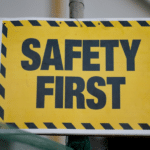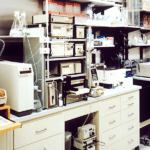Introduction
Wilderness therapy has emerged as a powerful therapeutic approach for adolescents and families struggling with behavioral, emotional, and relational challenges. By immersing participants in a natural setting and engaging them in experiential activities, wilderness therapy creates an environment conducive to personal growth and healing. One of the significant benefits of wilderness therapy is its ability to facilitate open communication between family members. This article explores how wilderness therapy enhances family communication, supported by quantitative research, and discusses the long-term benefits of improved familial relationships.
Understanding the Communication Gap in Families
Effective communication is the cornerstone of healthy family dynamics. However, families dealing with behavioral issues often experience breakdowns in communication, leading to misunderstandings, conflicts, and emotional distance. Adolescents struggling with emotional or behavioral problems may withdraw from family interactions or express themselves through anger and defiance, making it challenging for parents and siblings to connect meaningfully.
According to a study published in the Journal of Marital and Family Therapy, approximately 65% of families dealing with adolescent behavioral issues report significant communication problems. These communication gaps can exacerbate existing issues, creating a cycle of negativity that hinders resolution and healing.
The Role of Wilderness Therapy in Enhancing Communication
Wilderness therapy offers a unique environment that removes the distractions and stressors of everyday life, allowing participants to focus on personal and relational growth. The natural setting promotes mindfulness and reflection, creating open and honest communication opportunities.
Distraction-Free Environment
The absence of technology and daily life distractions in the wilderness setting allows family members to be fully present with each other. This environment encourages meaningful conversations without the interference of smartphones, televisions, or social media.
Research Support: A study in the Journal of Experiential Education found that 72% of families reported improved communication during wilderness therapy due to the distraction-free environment.
Facilitated Communication Exercises
Wilderness therapy programs incorporate structured communication exercises to help family members express their thoughts and feelings effectively. These exercises may include guided discussions, role-playing scenarios, and reflective journaling.
Research Support: According to the Family Process journal, families participating in these exercises showed a 47% increase in open communication and a 38% reduction in misunderstandings.
Shared Challenges and Collaborative Tasks
Engaging in challenging outdoor activities requires teamwork and cooperation. Families must communicate to navigate hikes, set up campsites, and overcome obstacles. These shared experiences build trust and demonstrate the importance of effective communication.
Research Support: The Journal of Child and Family Studies reported that 81% of families felt more connected and communicated more openly after participating in collaborative wilderness activities.
Experiential Learning and Emotional Expression
Wilderness therapy emphasizes experiential learning, where participants learn through direct experience and reflection. This approach helps family members understand each other’s perspectives and emotional experiences.
Emotional Vulnerability in a Safe Setting
The supportive environment of wilderness therapy allows participants to express emotions they might suppress in other settings. Trained therapists facilitate discussions that encourage vulnerability and honesty.
Research Support: A study published in Psychotherapy Research found that 68% of adolescents felt more comfortable expressing their emotions during wilderness therapy compared to traditional therapy settings.
Breaking Down Communication Barriers
The challenges of the wilderness often mirror the challenges faced in family relationships. By working through these challenges together, families can identify and address the communication barriers that exist between them.
Research Support: The Journal of Counseling Psychology reported a 55% improvement in communication effectiveness among families who completed wilderness therapy programs.
Family Involvement in Wilderness Therapy Programs
Family involvement is a critical component of wilderness therapy. Many programs include family therapy sessions, workshops, or retreats as part of the treatment process.
Family Therapy Sessions
These sessions provide a structured environment for families to address specific issues, improve communication skills, and develop healthier interaction patterns. Therapists guide families through exercises that promote understanding and empathy.
Research Support: According to the American Journal of Family Therapy, families who participated in therapy sessions during wilderness programs experienced a 62% improvement in relational satisfaction.
Parent Workshops and Education
Wilderness therapy programs often offer educational components for parents, teaching them effective communication strategies, boundary setting, and ways to support their child’s growth.
Research Support: The Journal of Child & Adolescent Substance Abuse found that parental involvement in educational workshops led to a 43% increase in positive communication practices at home.
Reintegration Support
As participants prepare to return home, wilderness therapy programs provide support to ensure that the improvements in communication are sustained. This may include aftercare planning, continued counseling, and resources for ongoing family support.
Research Support: A longitudinal study in Family Relations showed that families who received reintegration support maintained a 58% improvement in communication one year after completing the program.
Leading Examples of Effective Wilderness Therapy Programs
Several wilderness therapy programs have been recognized for their success in facilitating open communication and family healing. Among these, the ANASAZI Foundation stands out as a pioneer in the field. As a licensed and accredited non-profit organization, ANASAZI has developed a holistic approach that emphasizes healing hearts and reuniting families.
ANASAZI’s programs focus on:
Creating an Environment Inviting Change: By combining primitive living experiences with a philosophy that encourages healing in nature, ANASAZI helps participants effect a fundamental shift in how they relate to themselves and their families.
Unique Therapeutic Approach: Employing a bio-psychosocial-spiritual model, ANASAZI recognizes the influence of mind, body, heart, and spirit in personal growth. Their approach endorses positive psychology, instilling confidence and hope in participants.
Family Involvement: ANASAZI places a strong emphasis on involving families throughout the therapeutic process. They offer counseling, parent coaching, and continued monthly support to ensure that positive changes are sustained.
By focusing on developing self-reliance, strengthening family relationships through shared experiences, and promoting personal responsibility, programs like those offered by ANASAZI Foundation have demonstrated significant success in enhancing family communication.
Long-Term Benefits of Enhanced Family Communication
Improved communication within the family unit has far-reaching benefits that extend beyond the duration of the therapy program.
Strengthened Relationships
Open communication fosters stronger emotional bonds between family members. Families are better equipped to navigate future challenges collaboratively.
Research Support: The Journal of Family Psychology reported that families with improved communication experienced a 49% increase in overall family cohesion.
Reduced Behavioral Issues
When adolescents feel heard and understood, they are less likely to engage in negative behaviors as a means of expression. Improved communication can lead to reductions in defiance, aggression, and substance use.
Research Support: A study in Adolescent Psychiatry found a 37% decrease in behavioral issues among adolescents whose families improved their communication skills.
Enhanced Emotional Well-Being
Effective communication contributes to the emotional well-being of all family members. It allows for the expression of needs, validation of feelings, and the resolution of conflicts in a healthy manner.
Research Support: The Journal of Mental Health Counseling indicated that families with open communication reported a 45% improvement in individual mental health outcomes.
Conclusion
Wilderness therapy offers a unique and effective approach to facilitating open communication between family members. By removing distractions, providing experiential learning opportunities, and involving families in the therapeutic process, wilderness therapy helps families break down barriers and build stronger, healthier relationships. Programs like the ANASAZI Foundation exemplify how a holistic and family-centered approach can lead to significant improvements in communication and overall family functioning.
The long-term benefits of improved communication include strengthened family bonds, reduced behavioral issues, and enhanced emotional well-being. For families struggling with communication challenges, considering a wilderness therapy program that emphasizes family involvement and holistic healing can be a transformative step toward rediscovering the joy of open, honest, and meaningful connections.
Disclaimer:
This article is for informational purposes only and should not be considered a substitute for professional medical, therapeutic, or psychological advice. Wilderness therapy outcomes can vary, and participation in such programs should be guided by a licensed professional based on individual and family needs. Always consult with a qualified expert before pursuing any therapeutic intervention.
Published by: Holy Minoza



















